American Catholic History
Telling the stories of Catholics on these American shores from 1513 to today. We Catholics have such an incredible history in what are now the 50 states of the United States of America, and we hardly know it. From the canonized saints through the hundred-plus blesseds, venerables, and servants of God, to the hundreds more whose lives were sho-through with love of God, our country is covered from sea to shining sea with holy sites, historic structures, and the graves of great men and women of faith. We tell the stories that make them human, and so inspiring.
Episodes
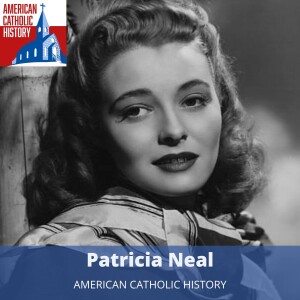
Thursday Oct 10, 2024
Thursday Oct 10, 2024
Patricia Neal’s Hollywood career began the same year she met Gary Cooper and started an affair with him. That affair had a profound impact on the rest of her life. She had an abortion, and lived with the pain of the relationship gone bad for decades. She married British author Roald Dahl and they had five children. But tragedy struck two of her children and herself, and then Dahl asked for a divorce after she found out he’d been having an affair. She was living with a lot of pain. But in the meantime she had a reconciliation with Gary Cooper’s wife and daughter, Maria, after Maria reached out to her with forgiveness and a desire to mend fences. Eventually Neal found peace and solace at the Regina Laudis Abbey — home to Mother Dolores Hart — which she visited at the suggestion of Maria Cooper. Eventually, after experiencing much healing and peace, she became Catholic and after her death was buried at Regina Laudis.
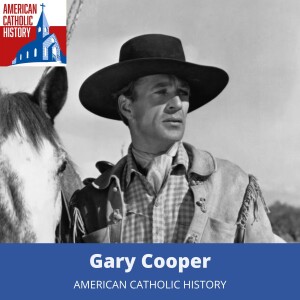
Monday Oct 07, 2024
Monday Oct 07, 2024
Gary Cooper was one of the greatest actors in Hollywood history. His strong, understated, good-natured characters established a paradigm, especially for Western heroes. He won two Oscars for Best Actor, while acting in 84 films over 36 years. But his off-screen life wasn’t quite as virtuous and praiseworthy. He had a significant problem with philandering, which continued even after he got married. His wife, Veronica “Rocky” Balfe, was Catholic, and eventually her strong faith, and that of their daughter Maria, encouraged him to consider becoming Catholic and turning over a new leaf. By the time cancer came for him in 1961, he had become Catholic, left his womanizing ways behind, and embraced fully the life of the Sacraments.
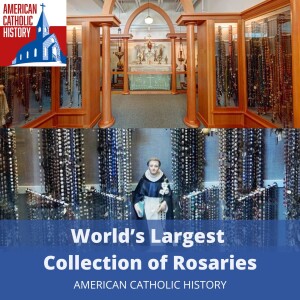
Thursday Oct 03, 2024
Thursday Oct 03, 2024
Donald Brown wasn't Catholic when he became fascinated with the Rosary. A bad bout of pneumonia when he was young put him in a hospital run by Sisters of Mercy in the early 1900s. In 1917 he began to collect rosaries. In 1929 he became Catholic. Over the decades he collected about 4,000 rosaries before his death in 1975 at 80 years old. His rosaries include some connected to Sister Lucia, one of the visionaries of Fatima, Governor Al Smith, Padre Pio, President John F. Kennedy, Robert F. Kennedy, Father Flanagan of Boys Town, Lou Holtz, and others. They range in size from the size of a thimble to 16 feet long. They are made from everything from precious gems to pieces of bone to foam balls. The collection occupies the top floor of the Columbia Gorge Museum in Stevenson, Washington, 45 minutes east of Portland, Oregon.
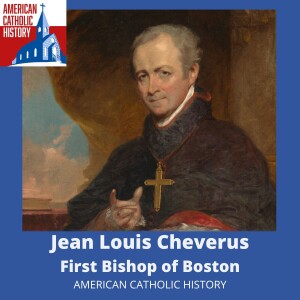
Monday Sep 30, 2024
Monday Sep 30, 2024
Jean Louis Cheverus was a remarkable man and the first bishop of Boston. He was another of the many bishops, priests, and religious who fled France due to the French Revolution and made a tremendous impact on the Church in America.
During his 27 years in New England he changed things dramatically. When he arrived, Catholics were a definite minority, and a reviled one at that. But through his tireless ministry, good humor, erudition, and holiness, he won over many previously hostile protestants, and became a friend to John Adams, Josiah Quincy, and many other prominent protestants. His counsel was sought by legislators. He aided in establishing the first chartered savings bank in the U.S. He worked tirelessly among all of his flock, no matter their social status or race. He established the first two parishes in New England, including St. Patrick for Penobscot and Irish in New Castle, Maine.
His sudden departure in 1823 when he was named bishop of Montauban in his native France saddened everyone.
But he left a lasting legacy on Boston and New England.
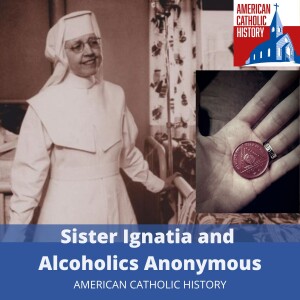
Thursday Sep 26, 2024
Thursday Sep 26, 2024
Sister Ignatia Gavin co-founded Alcoholics Anonymous. She worked in Admissions at St. Thomas hospital in Akron, Ohio. She had compassion for the alcoholics who came to the hospital. However, medical practice at the time did not regard alcoholism as a disease to be treated through admission and medical treatment. In 1939 Sister Ignatia and Dr. Bob Smith managed to get the hospital to admit alcoholics for the first time. From that first admission the practices of Alcoholics Anonymous grew into a national — and international — phenomenon. In 1952 she was transferred by her order to St. Vincent Charity Hospital in Cleveland, where she established Rosary Hall Solarium. Since her death in 1966 Rosary Hall Solarium and Ignatia Hall at St. Thomas Hospital in Akron have both continued to treat those with substance abuse problems.
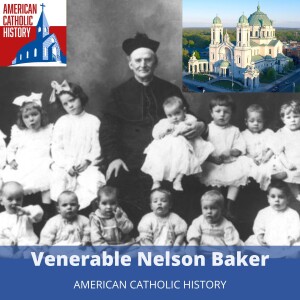
Monday Sep 23, 2024
Monday Sep 23, 2024
Ven. Nelson Baker was incredible. After a time as a soldier in the Union Army during the Civil War, he found success in business. He felt a call to the priesthood. He saved lives in and around Lackawanna, just south of Buffalo, New York. He invented direct mail fundraising. He did whatever was needed to build institutions to make others' lives better. And he did it all by relying utterly on the intercession of Our Lady of Victory. As a tribute to her beneficence, he built the massive and breathtaking Basilica of Our Lady of Victory.
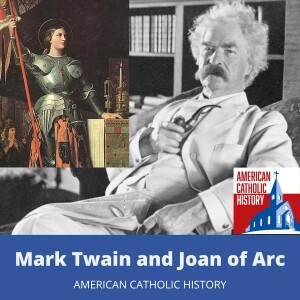
Thursday Sep 19, 2024
Thursday Sep 19, 2024
Mark Twain considered Personal Reflections of Joan of Arc his best, and his favorite work. He spent twelve years researching for it, and then two years writing. The book was originally published under a pseudonym in serial in Harper's Weekly. His fans and the general public were shocked and confused when they found out that this beautiful, serious, and deeply Catholic book was written by Twain. Twain was not Catholic — he wasn't even Christian — and he had a great animosity toward the Catholic Church. But in Joan of Arc he found the greatest human person he'd ever encountered.
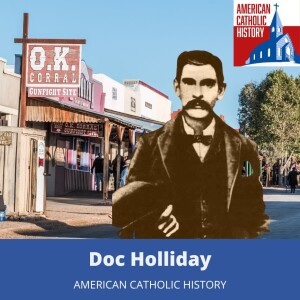
Monday Sep 16, 2024
Monday Sep 16, 2024
A legend of the Wild West, John Henry "Doc" Holliday was born in Georgia to Presbyterian and Methodist parents. But his sweetheart growing up was Catholic — and his first cousin — Martha Ann "Mattie" Holliday. After an excellent education and becoming a dentist, he was diagnosed with tuberculosis. To survive he had to move to a more arid climate, like west Texas, and parts of the desert and great plains states. Eventually he had to stop being a dentist, and he became a professional gambler and gunslinger. He befriended the Earp brothers, especially Wyatt, and was involved in many adventures with the Earps, including the famous shootout at the O.K. Corral in Tombstone, Arizona. Eventually the tuberculosis worsened and he died at 36 in Glenwood Springs, Colorado. But he had maintained a correspondence with his beloved Mattie. She had become a nun, and her influence led to Doc summoning a priest and becoming Catholic shortly before he died. The romance between Doc and Mattie was later captured in the 1939 movie <i>Gone With The Wind</i>, because the author of the book, Margaret Mitchell, was a second cousin, once removed of Mattie Holliday.
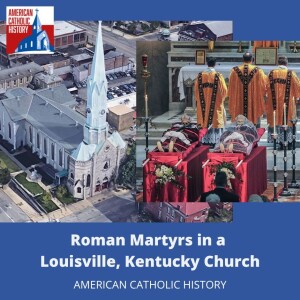
Thursday Sep 12, 2024
Thursday Sep 12, 2024
Saints Bonosa and Magnus were martyred in Rome in either the third or fourth century. Their bones rested peacefully in the catacombs until 1700, when they were given to the Cistercian sisters in Anagni, a town near Rome, for veneration in their chapel. When the Kingdom of Italy conquered the Papal States in the late 19th century, Pope Leo XIII needed a new place to keep these old relics safe. Fortunately, the pastor of St. Martin of Tours parish in Louisville, Kentucky had written to Rome requesting relics. Pope Leo XIII sent the skeletons of Bonosa and Magnus, and since 1901, these two Roman martyrs have been venerated safely and peacefully in Louisville. Learn more about the parish of St. Martin of Tours, and how anti-Catholicism almost destroyed that church when it was only two years old.
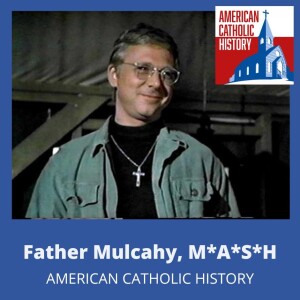
Monday Sep 09, 2024
Monday Sep 09, 2024
Father Mulcahy, Army chaplain of the M*A*S*H 4077, was perhaps the most important priest on network television not named Fulton Sheen. He was a fictional character, and the actor who played him, William Christopher, was Methodist. But Father Mulcahy was an integral part of what made M*A*S*H one of the best television series of all time. He was a humble, real man, with his own struggles with pride, but who managed to be a steady and humanizing presence in that TV depiction of hell on earth.










